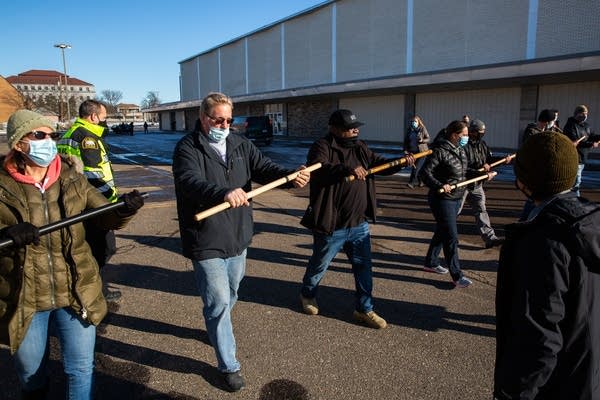St. Paul police lead training to protect firefighters during mass demonstrations
Activists are skeptical police will respect their rights to protest as Chauvin's trial approaches in Minneapolis

St. Paul police officers train to move a crowd in order to give firefighters access to a scene during joint training exercises in St. Paul on Feb. 24.
Evan Frost | MPR News
Go Deeper.
Create an account or log in to save stories.
Like this?
Thanks for liking this story! We have added it to a list of your favorite stories.


